Introduction
The organic industry has been expanding tremendously in developed world such as Australia. With a variety of products offered in the industry, fruits form an essential product under this category. Just squeezed plays an enormous role in Australia Organic food, fruit juice, industry.
The company, through the just delicious fruit juices, offers almost 20 different fruit juice varieties which are 100% natural (Just squeezed: Just Squeezed 2012). In order to expand the company, the new marketing manager, of just squeezed, just delicious product has embarked in an initiative to analyze the macro environmental forces impacting the company’s environment.
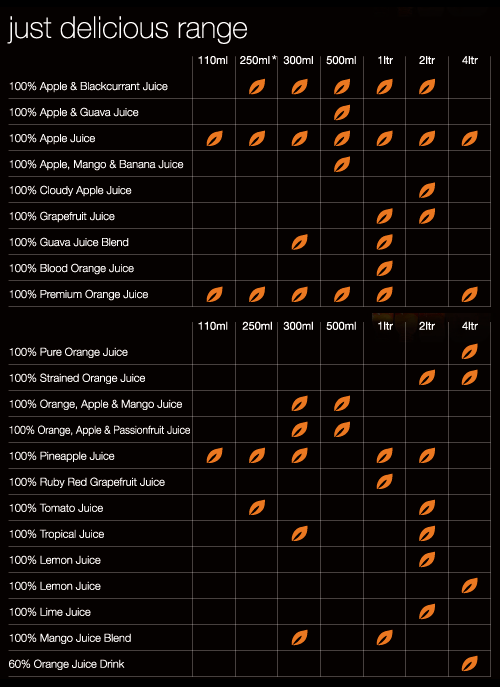
The Forces will enable the manager analyze the risks to the organic industry, and their impact on marketing initiatives for the chosen product of the company. Just fruit Juices Company is faced with the challenge of a changing industry.
The company has to fill the gap through a search of new ways to add value to its customers. In doing this, the company must come up with a range of marketing strategies geared to its different publics. The macro environmental factors will help the company in designing a plan for further marketing strategies.
Statement of the problem
Organic farming began in Europe in the 1920’s in the rise of farmers concern on the effects of industrialization. In the initial stages, farmers were concern on environmental factors associated with industrialization such as the effects of industrialization on the soil fertility e.g. concern on the use of artificial fertilizers in the soil fertility.
The foods consisted of fruits, meat and dairy products, oil seeds, health and body products, vegetables, nuts and animal fiber. With time, people have learnt the benefits of organic foods to the environment and through healthy living.
Many companies have opened up in the effort to supply these products to the consumer. Currently; the organic industry is facing a major problem. There industry is experiencing a dynamic growth in competitors. Entrants of new companies have become a common phenomenon. In addition, there is constant competition from the inorganic industry.
Company Focus and Vision statement
Just squeezed mission statement is stated in terms of the Focus area of the company. According to the company, its Focus statement is stated as follows: The focus of Just Squeezed is producing high quality products and providing great services in three fold:
First, just squeezed operates on a global level with farmers to ensure the best quality fruit for its juices, second, the Company invests in ongoing product and; thirdly, the Company cares about its customers and, therefore, pays attention to their requirements and the ways it can create value for them.
Further, the company states that its reputation is a justification to its passion for the quality of its products and provision of great services to its customers (Just squeezed: Just Squeezed 2012).
The company vision is to create the very best fruit juices in Australia. Its goes further to give the customer service vision as “We’re about you, your customer and satisfying their need”. Since the company is in the organic fruit industry, stating its first priority of focus in terms of quality is very essential. It makes a standard of service especially when compared to other organic juice providers in the market.
Organic food is all about quality. While business, more so the inorganic business has become all about money, neglecting the health of the consumer, the first priority of focus for just squeezed is not about making that extra Euro or dollar, its core priority stands in creating a trustworthy relationship with the customer.
The company provides quality by working closely with growers at a global level. Growers dictate the quality of natural products.
By first concentrating on them, the company guarantees the end user that the end product is natural and organic. When the growers are satisfied, the company shifts to its second objective of investing in ongoing products. This is the part that shows concern for health measures and policies. The customer is being assured of the process of extraction.
Finally, the company shifts focus to the customer, concentrating on the needs of the customer, and creating value for them. Every business should always give its priority to the customers. The organic food consumers have chosen to go organic for a specific reason, and the company should show them that they matter, and their needs and requirements have been properly met.
Situation Analysis
Macro environmental factors
The company key decision and operations are affected by the macro-environmental factors of a country in context. Being an Australia company, the company has been greatly influenced by the economic, social, political and legal framework of Australia. The economic factors of the country show a negative impact towards the level of consumer spending.
Surveys in the countries GDP conducted by several institutes indicate that the growth rate of Australia has been slow in the last couple of months. According to the Westpac-Melbourne Institute, the growth rate since November 2011 has been slow and weak. These sentiments are further echoed in the recent figures released by the Australia Bureau of Statistics. Last year growth rate made a recording decline over the past ten years.
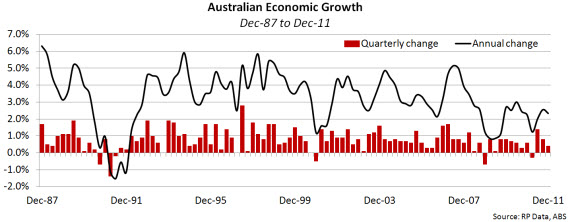
The America Bureau of statics goes further to attribute the decline in growth rate to increased consumer savings. Consequently, Consumers’ spending has declined. In the past years, the household saving has been increasing, and by the year 2007, the figure had grown to an 8.8%.
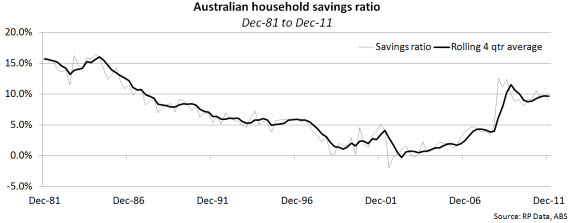
These predictions may interpret a negative income for the company. However, the company’s strategies enable it to adapt to rough economic situation more than any other organic company. The company is able to deal with opportunities in the market in order to increase its sale and expand in the face of uncertainty seen by other companies. The large variety in its product acts as a shield against pressure in the economy.
The varieties create a larger customer base hence the demand is not easily affected by the forces in the economy. The company continues to offer new varieties even in the spell of economic downfall such that a slight decrease of its other product is surpassed by the demand of the new product.
Constant changes and renovation of the existing product such as the change in the labels for the just delicious fruit juice in 2011 keeps the customers coming. The company works with suppliers at a global level rather than on Australian level. The supply is not easily affected by the economic instability of Australia.
The current technological trends are posing opportunities the just squeeze juice production. At one hand, the country is embracing the skills and application applied in the industry (Hassall & Associates: The Domestic Market 1996). There is an improvement in human labor and efforts, in the production of organic foods.
Australia educational programs have in the past years embraced the educational programs that will lead to greater efficiency in the organic industry. There has been the incorporation of organic based training in the curricula with a goal of educating high school agriculture tutors. Also, there has been an expansion of programs geared in incorporating organic training in major and minor programs at the college level (McCoy 2000).
At the grower level, there has been an improvement in transfer of technology in aspects such as disease epidemiology models, bio-based pest management, precision pest and fertility monitoring as well as availability of better breeds and seeds to the farmers of organic foods so that they can reap increased returns. The country organic products depend heavily on the export market.

In reaching the export market, the company can utilize technological advancement such as air transport, computer technology, Television and radio technology to reach the global and domestic market (Department of Foreign Affairs and Trade: Chain Store Distributors 2004).
Technologically, people in the country have embraced the consequences of farming in systems of whole farm and are connecting this to the environment befits such as the benefits of soil conservation, quality air and water, energy use and efficiency conservation of the bio-diversity. By 2003, about 1511 farms mainly in Queensland had been certified for organic food growing in Australia.
The number was expected to increase by 20-30% by 2007 (Barker, Kirk & Munday 1990). There has been a greater understanding of the technology behind organic production such as soil fertility. All these technological advancements are working to the advantage of the company. The technology advancement has led to increased organic fruit that consequently works to the advantage of the company.
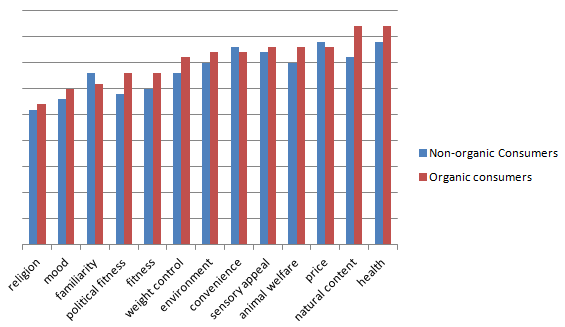
As seen in the table above, social factors such as natural living and an increased concern for healthy living are leading to more consumption in organic products. The company can change this to a more competitive advantage by drafting strategies that appeal to the consumer health. Concentrating on the 100% fruit juice purity of the product and the hygiene consideration in extraction can help the company boost its sales further.
Other socio cultural factors such as demographics also affect the consumption of organic food. In terms of gender, a research on the Australian organic industry revealed that more women consume organic food than the men (44% women compared to 34% of men) (Charles 2002). Majority of the organic consumers comprise of the well educated and the middle income.
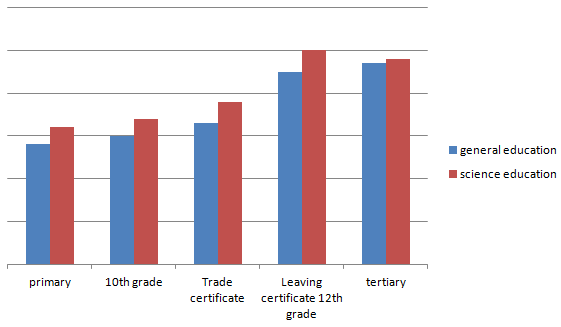
This statics can be very essential to just squeezed in designing their market segments. Organic farming in Australia is conducted in gardens. However, many people in the country often opt for other jobs rather than gardening. This is a great contradiction with the perception that people have towards gardening. 75% of people in Australia value gardening greatly as a source of good health and improved lifestyle (Boughton 2002).
Legally, the organic industry in Australia is guided by strict legislations and regulation. The products must be certified before the products are labeled as purely organic. The Australian Quarantine and inspection Service (AQIS) works with other organizations in the certification of organic products. The Export Control certifies any organic food that is to be exported.
Politically, the company does not face major drawbacks. The country has been stable, and a majority of the external political forces do not affect the company directly. While the industry main challenge becomes adequate legal framework, the participants in the market positively embrace the company’s contribution in the organic industry.
SWOT Analysis-Porter Five values
A SWOT analysis of the Just Squeeze juice Company can be well explained using Porters Five values. Firstly, the Company being in the organic industry faces a major threat from the competitors in the organic industry who are offering fresh fruit juice (Donaghy 2003).
The cut-throat intense competition poses a major threat to the company. These usually offer similar products and often concentrate in grabbing new customers. However, having been in the industry for the last 20 years, just squeeze fruit juice has a higher competitive advantage than its competitors since it has an established customer loyalty.
The substitute force in Potter’s five forces also affects just squeeze enormously. Taking other form of juices and beverage is an option the customers of the company are likely to take. The leading factor for Just Squeeze customer loyalty lies in the health concern among the consumers.
The force of the bargaining power of the customers also is another influencing factor that the company must put into consideration. While the juice provider has remained in control, by offering a variety of products, they must be careful and become innovative alongside the quality that they offer.
The risk of new entrants in the market is another force that the company should always have in mind and take precautionary measures (Allan 2008).
Since the company has been in operation for a long time, many competitors have seen how the company utilizes its ability to offer quality and its consideration of the health of the consumer (Donald 2001). The company should be careful since the organic industry in Australia is growing, and many companies are calculating the risk and gains in entrance.
Competition
The competition for the just squeeze fruit juice cannot be evaluated at a national level. The company main market is the export market, and its major rivals are in the international market majorly in the United States. Though the United States has lagged behind Europe in production of organic food, the number of organic food consumers is increasing in the midst of increased concern for healthy living.
By the year 2002, the US market for organic food was worth US $ 111 billion (Austalia Bureau of Statistics Publicaton: Australia Economic Growth 2008). These were majorly supplied through whole food market in West Coast and North East.
Germany, on the other hand, is the leading expanding organic market in Europe. In constructing its competitive strategy, the company should consider the global markets and in particular competition from the countries which export fruit juices in the importers of its product.
Communication tools
Communication refers to the process of creating a mutual understanding between an organization and its publics. Communication in an organization context is an essential tool while trying to achieve the goals of the organization. Communication in the organization involves the downward flow of information, the upward information flow or the horizontal communication (Allan 2008).
Downward information flow involves information from the top management to the lower employees e.g. appointment letters. Upward communication involves feedback information from employees to manager e.g. in suggestion boxes or reports. Horizontal communication involves information from one department to another e.g. in the form of meetings.
The organization must communicate effectively with its employees, with the suppliers who in this case refer to the global growers of organic fruits, the agents, brokers and distributors, retailers, wholesalers and export consolidators, its customers both at global and local level and other stake holders such as the community, government and the shareholders of the company.
Each of the organization public requires a different tool of communication.
In communicating to the growers, the best communication approach will involve a direct communication channel through the retailers in the industry (Allan 2008). A close look at the Australian industry reveals that information flow to the growers was best when the retailers were utilized to keep growers informed about the worth, prices and acceptance of their produce.
The exception is milk, where processors provide extensive feedback to producers. Direct Communication between growers and supply chain businesses such as the just squeeze fruit company are predominantly informal, except for milk production.
Communication between an organization and the government is very essential in order to ensure to ally the country political forces in favor of the company. Communication in the form of lobbying is very essential to ensure legislators’ pass laws that are in favor of the company and reject those against the company. The company has tried to keep in touch with key politicians in the industry through communication.
This has mainly involved having constant telephone call invitations and face to face meetings in order to inform them of the current trends in the organization. In dealing with the distributors, the company utilizes face-to face communication through the internal communication department. The management conducts constant field visits to distributors in order to maintain open channels of communication with them.
The employees of a company are very crucial in the achievement of the organization goal. In utilizing the communication tools, just squeeze has an internal communication department that helps in the flow of information from the top management to the middle management and finally to the technical employees.
Internal communication between the various departments is often conducted in the form of meetings, memos, constant team building, open door policies as well as reports and manuals. Communication inform of training is often provided for new employees in order to incorporate them into the organization. Informal communication structure also exists in the organization in the form of grapevine.
The company utilizes various tools in communicating with its customers. The company website consist of various tabs that aid in information flow between the organization and its customers. The information varies from the various products offered by the organization and their prices, company mission and vision, quality and its history.
The company also utilizes the distributors in reaching its customers. Other communication tools utilized by the company include the telephone and the media. The company keeps the shareholders of the company informed about the growth and the financial transaction through the use of financial statements.
This are usually prepared on an annual basis and presented to the shareholder ether physically through mailing, through the Annual General meeting or in electronic form.
The community in which the company operates contributes enormously towards the success of the company. The company must constantly reach out to the community in order to maintain a mutual relationship. The company must ensure that it does not offend the community in terms of environmental pollution or exploitation (Kondinin Group Publication: Organic Farming in Australia 1997).
In doing so, the company, conducts constant research and surveys to get views from the community. In an effort to sustain its corporate Social responsibility, the company constantly offers funding and grants to its community. The company website gives the community telephone contacts on how to access the company’s funds and grants.
In accessing the global market, the company utilizes communication tools such as the internet. There is use of the emails, teleconferencing as well as video conferencing to relay the company information to the global stakeholders. The communication tools that the company utilizes consist of a variety of networked devices that must work together in achieving a common goal. The organization must ensure that all its publics are not left out in a communication process.
Effective communication entails a proper evaluation of the context in order to apply the appropriate tools and media of communication (Weiss & Charles 2010). Proper communication helps avoid unnecessary breakdowns in information as well as eliminate misunderstanding.
PR campaign
An organization PR campaign involves a strategically designed tool of communication whose goal is to restore a mutual understanding between an organization and its public. A public relation campaign is conducted by the company’s PR department after a careful analysis of the current trends.
PR campaigns are constructed to harmonize the company’s perceived image with the actual image i.e. changing what people think about an organization to represent what the organization really stands for. Just Squeeze Company has designed a PR campaign that it utilizes to create a mutual understanding with its employees. The company website gives evidence of the various offers and packs targeted to the employees.
The employees are able to gain enormously from the offers. In reciprocation, the employees contribute more to the organization. A feeling of belongingness is created and achieved through the PR efforts. In addition, the company has created a PR campaign to deal with the community. In creating a mutual understanding, the company offers grants, charities and donation to needy members of the community. The initiative helps foster a positive image of the company to the community.
Conclusion
In the case of Just Squeeze, it has been documented that they created a strategic vision some twenty years ago. The twenty years have come as an advantage to the juice company through mastery in the art of the organic industry. The company has learnt the market strategies and established a base of loyal customers.
Over the years, many competitors have entered the market, but the industrial leader continues to thrive amongst them all. Adaptation to the market has been a core market strategy for survival. Quality service has been carried out and measured along the way making adjustments in areas that need improvements. By sticking to its goal, measuring, and adjusting performance along the way, it is no wonder the organic company continues to expand and grow.
References
Allan, D 2008, Business Communication: Organizational goal, Pearson, Chester.
Australia Bureau of Statistics publication: Australia Economic Growth 2008. Web.
Barker, R, Kirk, J & Munday, E 1990, Organic Food Analysis, Indiana University Press, Bloomington.
Boughton, J 2002, ‘Organic food draft: A brief look’, Healthy living Quarterly, vol. 42 no. 6, p.564.
Charles, C 2002. ‘What health care assistants advice on Organic food’, Living healthy, Spring issue, pp.647-85.
Department of Foreign Affairs and Trade, Chain Store Distributors: Agrifood Globalization and Asia 2004. Web.
Donaghy, J 2003, Consumer demands for organic and genetically modified foods. Web.
Donald, C, 2001, ‘Nutritional benefits in Organic food’, Living healthy, vol. 97 no. 22, pp.63-64.
Hassall & Associates: The Domestic Market for Australian Organic Produce: An Update 1996. Web.
Just squeezed company: Just squeezed bottle designs 2012. Web.
Kondinin Group publication: Organic Farming in Australia 1997. Web.
Lockie, L 2002, Eating green: motivations behind organic food consumption in Australia: Sociologia Ruralis, Perseus: London.
McCoy, S 2000, Export market potential for clean and organic agricultural Products. Web.
Weiss, A & Charles, W 2010, Achieving Effective Organization Communication, Perseus: London.